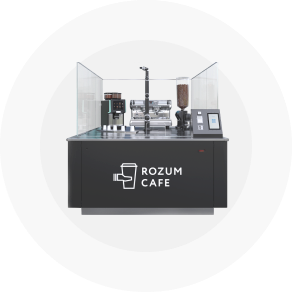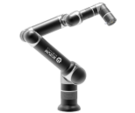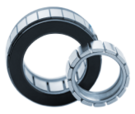When tasks get more complicated than to provide rotational or linear movement, regular actuation solutions prove to be inefficient. Applications catering to specific needs require a major transformation of basic drive configurations to create narrow-focus special motors (e.g., robotic motors, clean-room solutions, etc.).
How special a motor can get
In a general sense, a special motor is a drive mechanism outside the standard lineup of a manufacturer or non-universal by designation, including:
- Intended for operation under extreme conditions.
- Market players come up with models capable of working under ultra-high vacuum, or at a temperature of up to 220℃, or when exposed to hazardous chemicals. There are actuators with properties enabling their utilization in radioactive and explosive areas.
- Listed as having additional application-specific functionality.
- Actuators in medical pumps can handle fluids without contamination. Motion solutions for computer hard drives allow to create lower profile modifications without impacting the HDD capacity. Robotic drives are capable of setting a robotic arm in the same exact pose repeatedly and holding it for as long as needed.
- Boasting distinctive design features.
- Special design implies utilization of particular material types, or changing the lamination pattern, or alternating the winding method to reduce Eddy current or hysteresis losses. In robotic actuators, rare earth magnets add up flux density and improve resistance to thermal demagnetization.
- Customized to match customer requirements.
Those are mechanisms tailored to serve individual purposes. Vendors offer customization of shaft design, wire termination, mechanical interfaces—options are limited only by physical and implementation restrictions.
Most common types of special motors
Within the mind-boggling variety of special motors, it is possible to distinguish the following types based on design or intended use particulars.
Switched reluctance
In the mechanisms, both the stator and rotor poles are salient. The rotor has no coils, making slip rings, brushes, and commutators obsolete. Due to the special feature, switched reluctance mechanisms are more robust and cheap to manufacture.
Depending on the bearing, their rotation rates can reach 3,000 RPM. In addition, the drives support four-quadrant operation. On the downside, they are noisy, and torque variation is not smooth.
Usage examples:
- Hazardous environments
- High-speed industrial machines
- Traction mechanisms
- Domestic appliances (e.g., vacuum cleaners, etc.)
- Office equipment
Technical details:
A four-quadrant engine can rotate in both forward and backward directions, while operating either in the motoring or regeneration mode. When the engine moves forward, it acts as a motor— generating mechanical energy from electricity supply. Turning in the reverse direction, it functions as a generator transforming mechanical work into electrical power.
Linear induction
Linear induction engines are meant to output rectilinear motion without a transmission or a conversion stage. They have no end couplings, which is why both horizontal and vertical mounting method are acceptable.
Usage examples:
- Plotters
- Reading heads
- X-ray camera positioning equipment
- Conveyor belts
One of the subtypes is the Maglev traction engine functioning based on the magnetic levitation principle. The mechanism can be supplied without a bearing and in the non-radial load design. The modifications result in improved longevity and minimized noise.
Technical details:
Magnetic levitation is a process whereby a magnet, sliding over a metal surface, induces currents in the metal and invokes forces pushing the magnet up. The technology is currently employed to drive the ultra-fast maglev trains, as well as in contactless induction melting and magnetic bearings.
Shell-type armature
Shell-type armature engines are peculiar in that they have a cylinder-shaped armature made up of multiple copper or aluminium coils. The coils, otherwise known as skeins, are bonded together with polymer resin or fiberglass.
Since the armature has no iron core, inertia and inductance are low, whereas flux density is high. The electrical time constant is less than 0.1 milliseconds. Due to exceptional torque-to-inertia ratio, acceleration rates can reach 1,000,000 rad/sec2.
Because the thermal time constant of the armature is close to 20 seconds, cooling arrangements or a complex control circuitry are critical to prevent overheating in overload conditions. At high rotation rates, the drives produce audible noise. Their use is limited to environments with strictly controlled conditions.
PCB or pancake
PCB actuators have a flat construction, with their external form reminding the contours of a pancake. Rotor windings are printed onto a thin circuit board manufactured from non-conductive material. The board rotates in a magnetic field generated by the permanent magnets mounted on ferromagnetic plates.
The force field is axial, whereas the current flows radially from the center to the edge of the disk and back. Since armature conductors are numerous, moment of force is considerable even at low speed.
The engine boasts a compact footprint and light weight—a good fit for applications with space restrictions or demanding unusual orientations. It has low inertia and almost-zero cogging and accelerates rapidly—from 0 to 10,000 RPM within some 10 milliseconds.
Because the mechanism comprises multiple commutator segments and the current capability of its windings is below average, it is best suited for intermittent operation. Brush wear is a minus, but the zero arcing effect due to minimum inductance makes up the deficiency to a great extent.
Usage examples:
- X-Y recorders
- Tape machine capstans
- Oscillographs
- Layer winding
- Point-to-point tool positioning
- Lawn mowers
Robotic applications
Micro and nano
Micro and nano engines are fabricated using the semiconductor technology. Their components have miniature dimensions—about the width of a human hair or even smaller in case of nano models. In operation, they rely on electrostatic than magnetic attraction between the stator and rotor poles. They are capable of generating powerful electric fields with only a few volts of supply voltage.
Usage examples:
- Military equipment
- Computer hard drives
- Sensing devices
- Adjustable mirrors
- Optical control elements
- Robotic technology
As technologies continue to evolve and new applications appear, the above list is extended. Emerging solutions incorporate innovative design elements, such as biomaterials, or feature enhanced performance characteristics—lower operation temperatures or reduced noise levels.
Servos as a special motor for robotics
Servos are also a special motor class because they are different from other types of electromagnetic engines in how they operate and what output they produce. Servo actuators are enhanced with a harmonic gearhead, a controller, and a position-sensing hardware. Gears make it possible to achieve consistent torque and speed rates. The controller-feedback device combination enables monitoring and prompt adjustment of motion parameters.
Servomechanisms are typically available in power ratings from below one watt to several hundreds. Smaller modifications are fitted into toys or model aircraft, while bigger ones prove efficient as robotic motors or industrial actuators.
In terms of robotic technology, servo drives solve the problems of inch-perfect posing throughout multiple runs and providing feedback on the states of robotic arm components. Servomechanisms are fast to react to alterations, whether in control algorithms or ambient conditions, which enhances robot agility and flexibility. By their torque ratings and consistency, they outperform most currently available motion solutions—whether in special or standard versions.
Compliant with the ‘classic’ servo description, the RDrive lineup models offer the following benefits:
- Their bodies are long, but narrow.
- With a temperature sensor and two 19-bit encoders, they are always on the watch and ready to make necessary corrections to motor trajectory.
- Integrated gear sets allow them to generate consistently high torque quantities, including at zero velocity.
- Swift response to commands enables completing direction reversal, as well as acceleration and deceleration within milliseconds.
Though the servomechanisms were initially meant to address the needs of robotic applications, their use options have so far been extended to include industrial machines and hobby projects. High torque, proven reliability, and unfailing precision—this is the added value robotic drives bring.














